Textile chemical testing standards are critical for ensuring product safety, regulatory compliance, and consumer trust. These standards help manufacturers limit harmful substances like lead, phthalates, formaldehyde, and PFAS in textiles. Key regulations and certifications include:
- OEKO-TEX® Standard 100: Certifies textiles are free from over 350 harmful chemicals, widely accepted in global markets.
- REACH (EU): Regulates over 10,000 chemicals for products sold in the EU, focusing on substances of very high concern (SVHCs).
- CPSIA (US): Protects children by limiting lead (100 ppm) and phthalates (0.1%) in textiles.
- ZDHC MRSL: Targets hazardous chemicals in manufacturing processes to prevent contamination.
- AFIRM RSL: Focuses on restricted substances in finished products, widely used by global brands.
- California PFAS Ban (2025): Prohibits PFAS in textiles sold in California, pushing global manufacturers toward safer alternatives.
- ISO 17025: Ensures reliable chemical testing through laboratory accreditation, recognized worldwide.
These standards not only address safety but also simplify market access globally. For example, OEKO-TEX® and ISO 17025 certifications enhance product credibility, while compliance with CPSIA and REACH ensures entry into U.S. and EU markets. Non-compliance can lead to recalls, fines, and lost consumer trust. Staying updated on these regulations is vital for manufacturers to mitigate risks and remain competitive.
Comprehensive Textile Testing Services | QIMA Quality Control Services
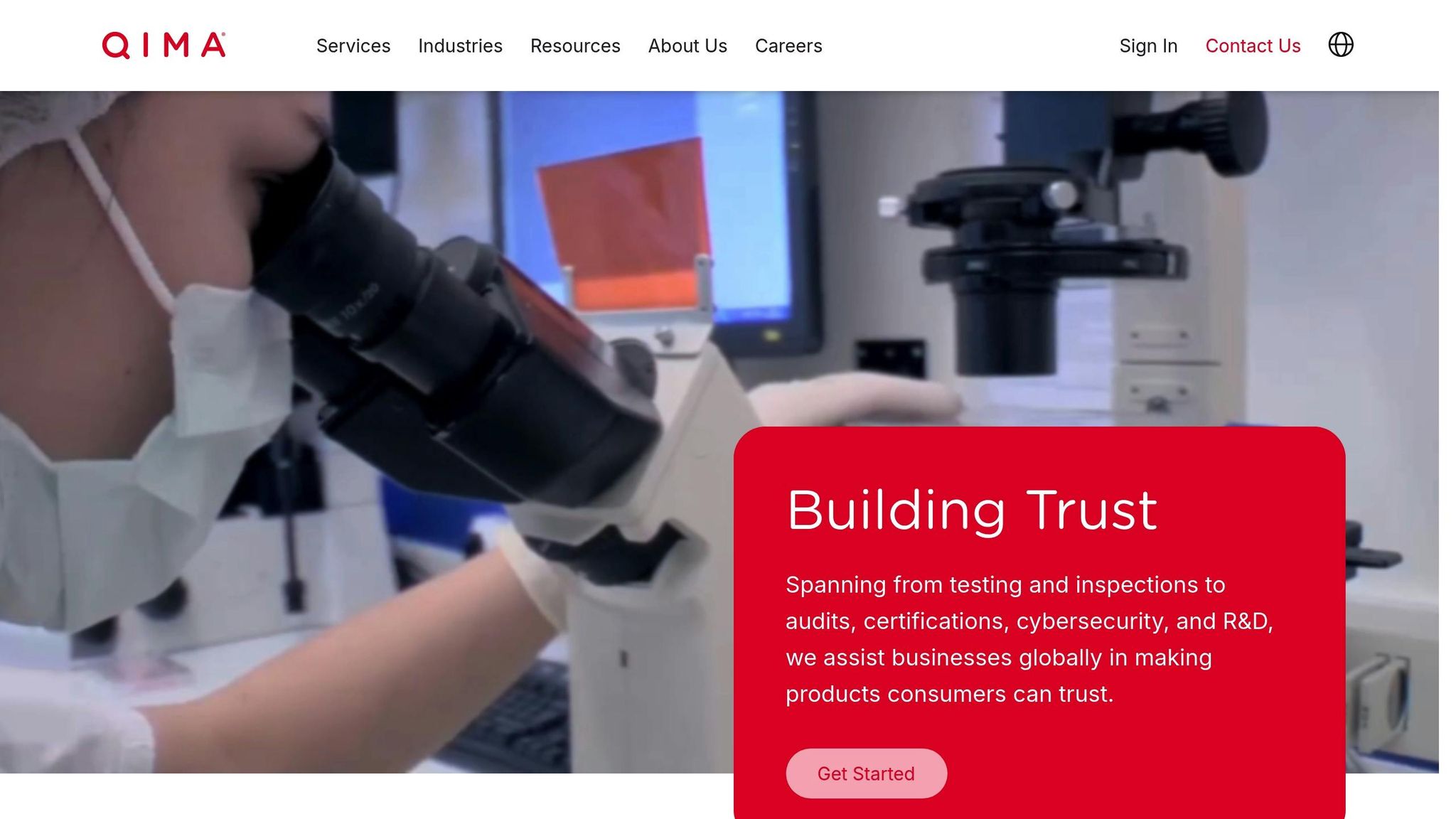
1. OEKO-TEX® Standard

The OEKO-TEX® Standard 100 is a globally recognized certification that ensures textiles are free from harmful substances, with over 21,000 certifications issued worldwide.
Scope of Chemical Restrictions
OEKO-TEX® sets limits on more than 350 substances, including formaldehyde, heavy metals like lead, cadmium, and mercury, as well as pesticides, phthalates, and azo dyes. Starting in 2025, the certification will impose even stricter limits on BPA and PFAS, going beyond existing legal requirements. This standard applies to every stage of textile production – from raw materials to finished goods – and includes textiles, leather, and accessories. These rigorous restrictions make products with this certification more acceptable in global markets.
Applicability to Global Markets
Thanks to its comprehensive chemical standards, OEKO-TEX® certification is widely recognized and accepted in over 100 countries. Products with this certification are better positioned to meet the chemical safety requirements in key regions like the United States, the EU, and Asia, simplifying international trade. In the U.S., it supports compliance with regulations such as the CPSIA and California Proposition 65. For example, JUNYUAN BAGS, a company specializing in customizable bags, often pursues OEKO-TEX® certification to ensure their products meet safety and environmental standards.
Focus on Hazardous Substance Management
To maintain certification, manufacturers must adopt proactive chemical management practices. This includes conducting regular testing, maintaining thorough documentation, and ensuring traceability across their supply chains – all verified by independent third-party laboratories.
Relevance to Sustainability and Compliance
OEKO-TEX® contributes to sustainability by promoting safer chemical use and reducing environmental harm. The certification is updated annually to reflect the latest scientific research and regulatory changes. For instance, JUNYUAN BAGS uses this certification to align its products with global safety and environmental standards.
Starting April 1, 2025, claims such as "GMO-free" and "organic" cotton will no longer appear on STANDARD 100 certificates. Instead, products made with organic cotton will require a separate OEKO-TEX® ORGANIC COTTON certification.
2. REACH Regulation (EU)
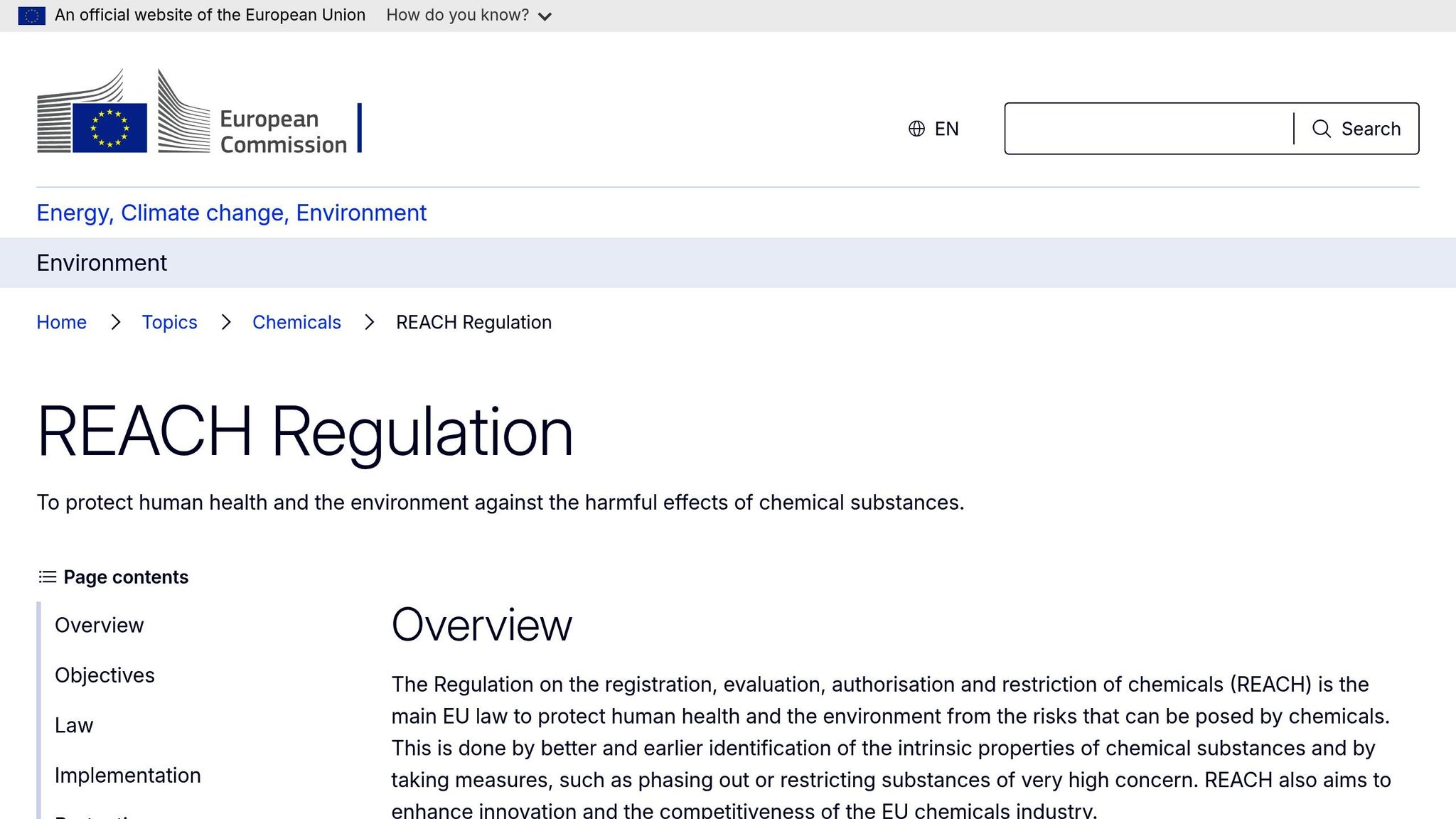
The REACH Regulation, which stands for Registration, Evaluation, Authorisation, and Restriction of Chemicals, serves as the European Union’s cornerstone framework for chemical safety, overseeing over 10,000 substances used in textiles. While it is an EU-specific regulation, REACH has become a global standard for managing chemical safety, significantly influencing practices worldwide. This widespread impact underscores its importance in shaping textile safety.
Scope of Chemical Restrictions
REACH enforces strict controls on hazardous chemicals in textiles to protect both human health and the environment. For instance, it limits the use of alkylphenol ethoxylates (APEOs), known endocrine disruptors that harm aquatic ecosystems, and bans azo dyes that may release carcinogenic amines. Additionally, the regulation restricts heavy metals like lead, cadmium, chromium, and mercury due to their toxic properties and long-term health risks.
The European Chemicals Agency (ECHA) maintains a Candidate List of Substances of Very High Concern (SVHCs), which, as of 2025, includes over 240 chemicals relevant to textile production. This list is continuously updated, with recent focus on PFAS, often referred to as "forever chemicals", and other emerging contaminants. The EN 17681-1:2025 standard for PFAS testing complements REACH by improving the detection of these regulated substances.
Applicability to Global Markets
REACH’s influence extends well beyond the EU, shaping global market practices. Any textile product sold within the EU must meet REACH standards, regardless of its country of origin. This means that U.S. companies and others exporting textiles to Europe must comply with these regulations, effectively making REACH a global benchmark for chemical safety. For example, businesses like JUNYUAN BAGS must adhere to REACH requirements to maintain access to European markets.
Focus on Hazardous Substance Management
A key aspect of REACH is its emphasis on managing hazardous substances throughout the entire textile supply chain. Manufacturers are required to implement structured chemical management systems, which include regular third-party testing, employee training, and meticulous documentation. Some companies choose to screen for all Substances of Very High Concern (SVHCs), while others focus on the chemicals most likely to appear in their products. This proactive approach helps identify potential risks early, ensuring compliance and minimizing the chance of product recalls or penalties.
Relevance to Sustainability and Compliance
By limiting hazardous chemicals and encouraging safer alternatives, REACH aligns with growing consumer demand for safer, more sustainable textiles. It promotes environmentally friendly production processes and greater transparency across supply chains. Beyond meeting legal requirements, compliance with REACH enhances a company’s credibility and strengthens consumer trust, which can boost marketability. Ultimately, REACH’s focus on substitution and transparency supports broader goals of sustainability while keeping chemical safety at the forefront of global textile production.
3. US CPSIA (Consumer Product Safety Improvement Act)
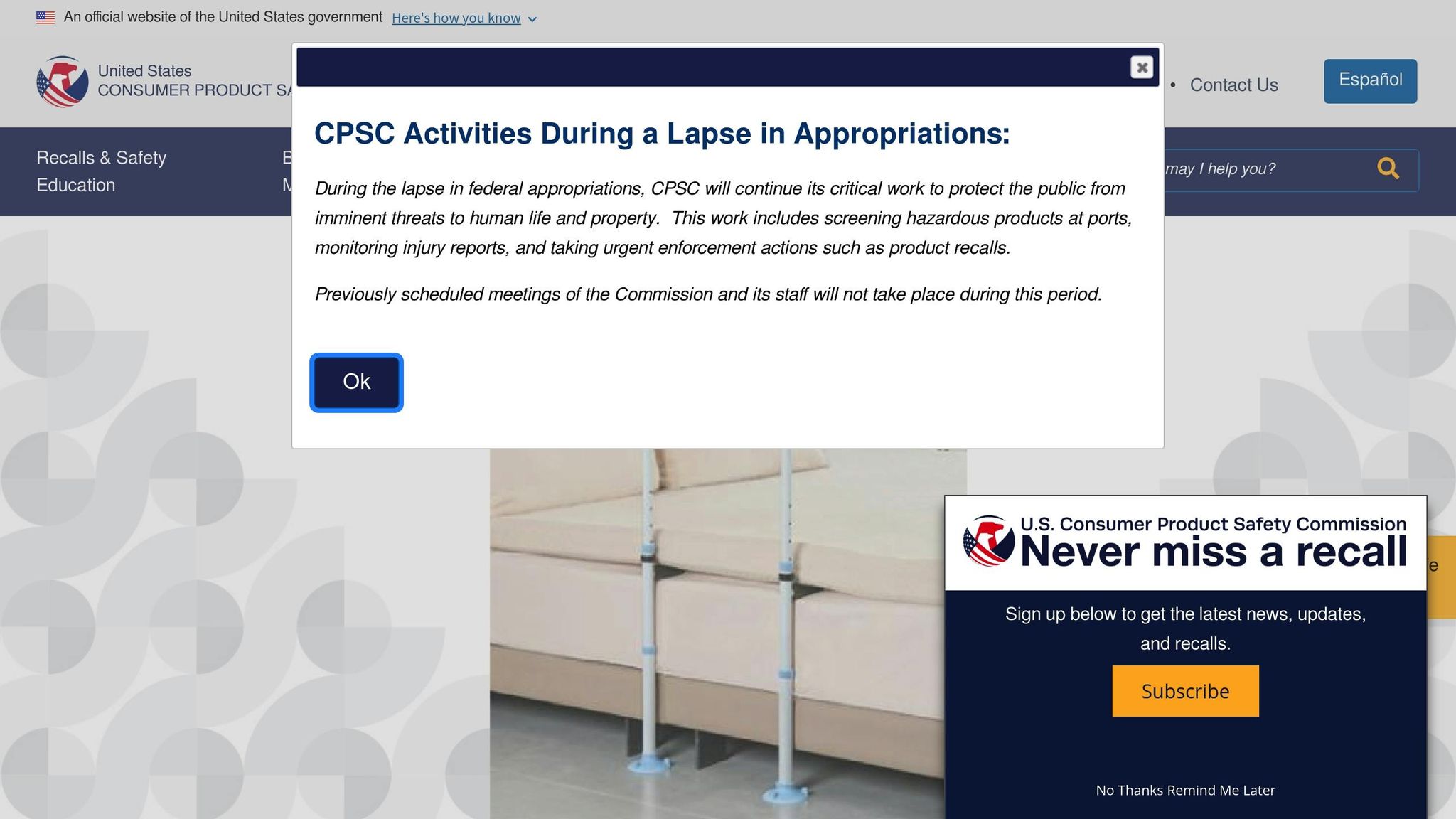
The Consumer Product Safety Improvement Act (CPSIA) is a cornerstone of US legislation designed to protect consumers, particularly children, from harmful chemicals in textiles. Passed in 2008 in response to a wave of product recalls, it marked a major shift in US product safety laws, focusing on stricter regulations and accountability for manufacturers.
Scope of Chemical Restrictions
CPSIA enforces strict limits on hazardous substances in textiles made for children, especially those intended for kids aged 12 and under. For example, the law caps lead content in accessible parts at 100 parts per million (ppm) and limits lead in paint or surface coatings to 90 ppm. These rules apply across all components of a product, ensuring comprehensive safety.
Additionally, CPSIA restricts phthalates – chemicals often used to soften plastics – to 0.1% (1,000 ppm) in children’s toys and child care items. This means manufacturers must test not only fabrics but also other product materials like hardware, adhesives, and any parts a child might touch.
Applicability to Global Markets
Although CPSIA is a US-specific regulation, its influence extends well beyond American borders. Any company exporting textiles to the US must meet CPSIA standards. For instance, businesses like JUNYUAN BAGS, which produce items like bolsas de pañales and youth sports bags, must comply with these chemical restrictions to sell their products in the US.
To simplify operations and maintain consistent quality, many international brands have adopted CPSIA-compliant practices as their standard. This approach not only ensures compliance but also strengthens chemical safety management on a global scale.
Focus on Hazardous Substance Management
CPSIA requires manufacturers to take a structured approach to managing hazardous substances throughout their supply chain. This includes adopting rigorous chemical management systems, using accredited labs for testing, obtaining a Children’s Product Certificate (CPC), and labeling products for traceability. Tracking labels are particularly important, as they enable quick action if safety concerns arise.
Since its enactment, the Consumer Product Safety Commission (CPSC) has issued over 1,000 recalls for violations of CPSIA chemical restrictions. These recalls, along with enforcement measures like blocked shipments, fines, and penalties, underscore the serious consequences of non-compliance.
Relevance to Sustainability and Compliance
CPSIA compliance aligns with global efforts to reduce hazardous chemicals in manufacturing. By encouraging the use of safer alternatives and emphasizing documentation and traceability, the law supports environmentally responsible practices. Manufacturers can use these systems to identify risks and improve their chemical management over time.
For textile producers aiming to enter the US market, meeting CPSIA standards is not optional – it’s essential. Retailers and brands often require proof of compliance, such as CPCs and test reports, before accepting products. As a result, chemical safety has evolved from being merely a regulatory requirement to a key factor in staying competitive.
4. ZDHC MRSL (Zero Discharge of Hazardous Chemicals Manufacturing Restricted Substances List)
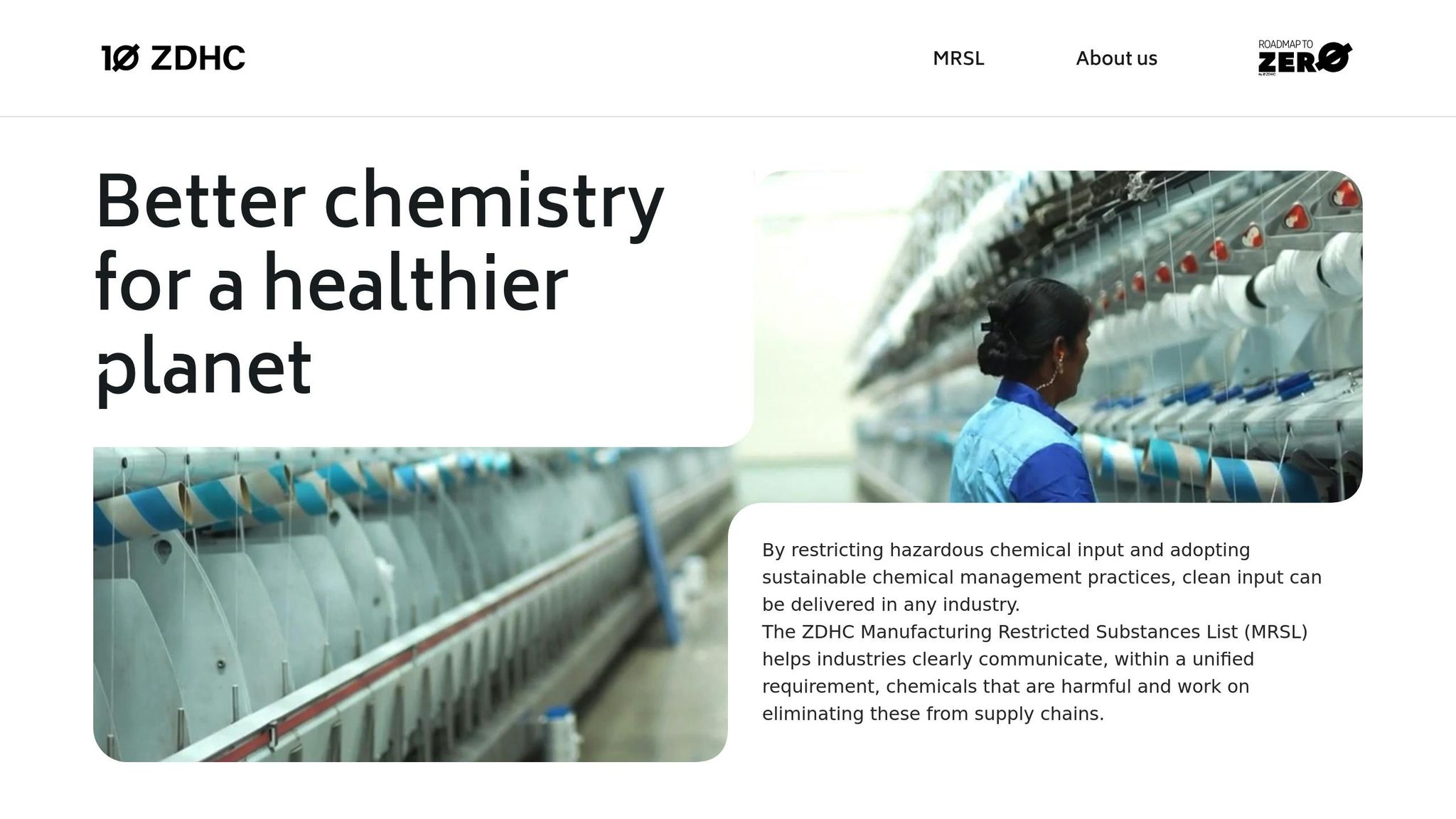
The Zero Discharge of Hazardous Chemicals Manufacturing Restricted Substances List (ZDHC MRSL) is a production-focused standard aimed at restricting the use of hazardous chemicals in the creation of textiles, leather, and footwear. Unlike standards that target only the final products, ZDHC MRSL tackles safety concerns during the manufacturing process itself, striving to eliminate harmful chemicals from the supply chain altogether.
Scope of Chemical Restrictions
The ZDHC MRSL regulates over 200 chemicals used in textile production, focusing on inputs rather than finished goods to prevent contamination. These restricted substances include categories like endocrine disruptors and carcinogens, which pose significant health and environmental risks.
What makes ZDHC MRSL stand out is its proactive approach. Instead of merely testing finished products, it requires manufacturers to eliminate harmful chemicals during production. This preventative strategy ensures cleaner processes and helps companies meet broader market compliance standards with ease.
Applicability to Global Markets
Currently, over 30,000 facilities worldwide have adopted the ZDHC MRSL. While compliance is voluntary, it has become a near-essential requirement for suppliers working with major global brands and retailers. For manufacturers aiming to enter international markets, adherence to ZDHC MRSL simplifies meeting regional regulations, making it a practical choice for global market access.
For example, companies like JUNYUAN BAGS, which produce customizable bags, benefit significantly from ZDHC MRSL compliance. It not only ensures environmentally safe production but also boosts their appeal to eco-conscious consumers and strengthens their position in international markets.
The standard’s global recognition allows manufacturers to streamline chemical safety compliance. Rather than juggling various regional restrictions, ZDHC MRSL serves as a unified framework that meets or surpasses many national requirements, saving time and resources.
Focus on Hazardous Substance Management
ZDHC MRSL provides a structured approach for identifying, monitoring, and eliminating hazardous chemicals from manufacturing processes. This involves regular chemical testing, maintaining detailed documentation, and ensuring restricted substances are absent from both finished products and wastewater.
Facilities are encouraged to conduct audits to spot non-compliant substances, source approved chemicals, train staff in chemical management, and collaborate with accredited labs for testing. By doing so, manufacturers can maintain comprehensive compliance and reduce chemical risks throughout the supply chain.
Additionally, the emphasis on traceability ensures accountability at every step, making it easier to address potential issues before they escalate into compliance violations.
Relevance to Sustainability and Compliance
Adhering to the ZDHC MRSL directly contributes to environmental protection by reducing the discharge of hazardous chemicals into ecosystems, safeguarding water sources, and shrinking the ecological impact of textile production. This aligns with growing consumer demands for safer, more sustainable products and helps businesses keep up with stricter environmental regulations.
The ZDHC MRSL is updated regularly, incorporating the latest scientific research and regulatory changes. This adaptability allows manufacturers to stay ahead of emerging chemical safety challenges rather than reacting to them after the fact.
With leading fashion brands increasingly requiring ZDHC MRSL compliance from their suppliers, the standard is becoming a key factor in meeting consumer expectations and navigating global regulations. Trends like EU REACH updates and U.S. state-level PFAS bans are further pushing manufacturers toward alignment with ZDHC MRSL.
sbb-itb-1e6451b
5. AFIRM Restricted Substances List (RSL)
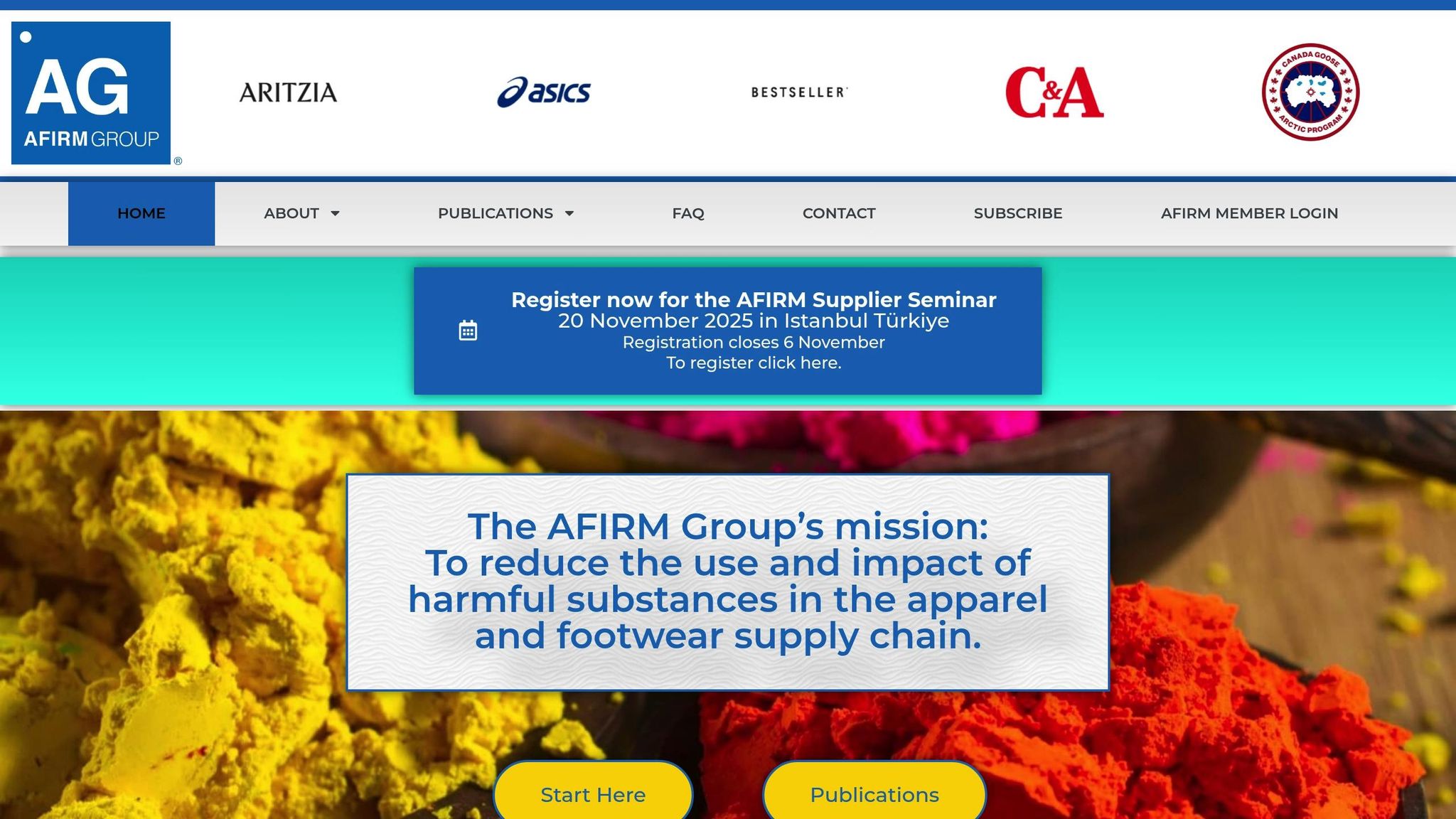
The AFIRM Restricted Substances List (RSL) is a standard developed by the Apparel and Footwear International RSL Management Group. Backed by over 30 major brands, it aims to simplify the management of hazardous substances in finished textile products.
Chemical Restrictions and Their Scope
The AFIRM RSL regulates over 200 chemicals, each with specific limits based on its category. These include substances like azo dyes, formaldehyde, phthalates, heavy metals (such as lead, cadmium, and mercury), and alkylphenol ethoxylates (APEOs). These chemicals are restricted due to their links to cancer, hormonal interference, skin irritation, and environmental harm. By focusing on finished products rather than production processes, the standard ensures that materials consumers interact with meet stringent safety standards.
One of the standout features of the AFIRM RSL is its tailored approach. Chemical limits vary depending on the product’s intended use, addressing different exposure risks – such as those in children’s clothing compared to adult garments.
Global Market Integration
The AFIRM RSL serves as a unifying framework for companies operating worldwide. It aligns with major regulations, including REACH in the EU and CPSIA in the US, making compliance simpler for global suppliers. Reports suggest that companies with strong RSL practices see fewer product recalls, better access to international markets, and greater consumer confidence.
Manufacturers like JUNYUAN BAGS use the AFIRM RSL to improve product safety and ease entry into global markets. Many leading apparel and footwear brands require their suppliers to adopt this standard as part of their contracts, ensuring readiness for international trade while maintaining high chemical management standards.
Emphasis on Hazardous Substance Management
Unlike standards that focus on production processes, the AFIRM RSL is dedicated to the safety of finished products. It sets clear chemical limits, testing procedures, and substitution guidelines. Companies adopting this standard often establish chemical management systems, train employees and suppliers on compliance, and partner with accredited labs for third-party testing.
By prioritizing supplier education and conducting regular audits, the AFIRM RSL helps companies identify and eliminate hazardous substances early. This approach not only reduces the risk of non-compliance but also strengthens supply chain relationships.
Sustainability and Compliance Benefits
Adhering to the AFIRM RSL reduces the use of harmful chemicals, lowers environmental impact, and promotes safer working conditions. It reflects a company’s dedication to responsible sourcing and production, which can boost brand reputation and meet growing consumer expectations for safer, more eco-conscious products.
The list is updated annually to incorporate new research and address emerging risks, such as PFAS. By consistently improving safety standards, the AFIRM RSL has become a benchmark for effective chemical management, supporting sustainable and compliant textile production.
6. California Safer Clothes and Textiles Act (PFAS Ban)
Starting January 1, 2025, the California Safer Clothes and Textiles Act (AB 1817) makes California the first U.S. state to ban PFAS in textiles. This law prohibits the manufacturing, distribution, and sale of new textile products containing intentionally added per- and polyfluoroalkyl substances (PFAS) within the state.
Scope of Chemical Restrictions
This legislation targets more than 10,000 PFAS compounds, which have long been used in textiles to provide resistance to water, stains, and oil. The ban applies to a wide range of textile products, including clothing, accessories, bedding, towels, upholstery, and backpacks. However, certain protective and industrial textiles that require specific performance properties are exempt.
Research has revealed PFAS in 72% of rain jackets and 60% of stain-resistant carpets. To address this, the law mandates replacing PFAS with the least toxic alternatives, encouraging advancements in textile chemistry and safer chemical practices. Companies must meet these requirements through thorough testing, documentation, and clear labeling of products sold in California. This approach is expected to drive reformulation efforts across the global textile industry.
Applicability to Global Markets
The Act’s reach extends far beyond California. Any international manufacturer or brand selling textiles in the state must comply with its PFAS restrictions, regardless of where their products are produced. This has led many global suppliers to reformulate their products and adopt PFAS-free processes to retain access to California’s massive consumer base. For companies like JUNYUAN BAGS, using PFAS-free materials is now essential for both compliance and maintaining a competitive edge in the global market.
Focus on Hazardous Substance Management
The law requires manufacturers to strengthen their chemical management practices. This involves auditing supply chains, updating material specifications, and conducting regular laboratory testing for PFAS content. Compliance also demands maintaining detailed records, often supported by third-party certifications or lab reports. State agencies enforce the law through market surveillance, documentation checks, and penalties for violations, making adherence a key priority for businesses.
Relevance to Sustainability and Compliance
Beyond regulatory compliance, the PFAS ban aligns with broader environmental goals by reducing the release of harmful, long-lasting chemicals into the environment. PFAS exposure has been linked to serious health issues, including increased cancer risks, immune system suppression, and developmental problems. By removing these substances from textiles, the Act not only safeguards human health and the environment but also boosts a brand’s reputation for environmental responsibility. With growing consumer awareness, PFAS-free products are gaining trust and market appeal. This law reflects a larger industry shift toward safer and more environmentally friendly textiles, as other states consider similar measures.
7. ISO 17025 Laboratory Accreditation
ISO 17025 is an internationally recognized standard that outlines the general requirements for the competence of testing and calibration laboratories. Unlike standards that set specific chemical thresholds, this standard ensures laboratories operate with precision and deliver technically valid results. In the textile industry, ISO 17025 accreditation guarantees reliable and legally defensible testing practices.
Applicability to Global Markets
One of the standout benefits of ISO 17025 accreditation is its global acceptance. Test results from accredited laboratories are recognized across major textile markets, including the United States and the European Union. This eliminates the need for redundant testing when exporting products. With more than 80,000 accredited laboratories worldwide spanning various industries, manufacturers have access to dependable testing services no matter their location. For example, companies like JUNYUAN BAGS benefit significantly from this global recognition, as a single accredited test can meet the requirements of multiple markets. In regions such as the United States, ISO 17025 accreditation is often a prerequisite for market entry. Without it, products risk facing regulatory hurdles or even rejection at customs. This international acceptance also forms a strong foundation for effective chemical management practices.
Focus on Hazardous Substance Management
ISO 17025-accredited laboratories are held to stringent protocols for identifying hazardous substances like formaldehyde, heavy metals, and banned azo dyes in textiles. These labs undergo frequent audits to ensure their methods remain accurate and their equipment stays properly calibrated. Accreditation requires laboratories to demonstrate technical expertise, maintain robust quality management systems, use validated testing methods, and participate in proficiency testing programs. This rigorous framework ensures that test reports on restricted chemicals are both scientifically reliable and legally defensible. In cases where contamination is detected, accredited labs provide detailed analyses, helping manufacturers quickly trace and eliminate the source, which can prevent costly recalls.
Relevance to Sustainability and Compliance
ISO 17025 accreditation plays a pivotal role in sustainable and compliant chemical management, with over 90% of major textile brands requiring test reports from accredited labs. It also enhances the credibility of test results needed for compliance with other standards like OEKO-TEX®, REACH, CPSIA, and ZDHC MRSL. As regulatory scrutiny grows – especially with emerging concerns like PFAS – working with a single ISO 17025-accredited lab for multi-standard testing simplifies compliance processes and reduces costs. For manufacturers offering customizable products, this accreditation boosts product credibility and facilitates smoother entry into regulated markets. Ultimately, it strengthens chemical safety and regulatory compliance efforts across the textile industry.
Standards Comparison Table
Chemical testing standards differ in their scope, requirements, and target markets, making it essential for manufacturers to pinpoint those that apply to their products. To complement the detailed standards discussed earlier, here’s a table summarizing key differences across product categories and geographic markets:
| Standard | Primary Scope | Key Chemical Restrictions | Sports Bags | Travel Bags | Children’s Products | Apparel | Geographic Focus |
|---|---|---|---|---|---|---|---|
| OEKO-TEX® Standard | Consumer safety certification | Limits on formaldehyde, heavy metals, BPA, PFAS | Voluntary | Voluntary | Recommended | Common | Global |
| REACH Regulation (EU) | EU market entry requirement | Restricts over 10,000 chemicals including SVHCs | Mandatory | Mandatory | Mandatory | Mandatory | European Union |
| US CPSIA | Children’s product safety | Limits on lead (<100 ppm) and phthalates (<0.1%) | If applicable for children | If applicable for children | Mandatory | If applicable for children | United States |
| ZDHC MRSL | Manufacturing process control | Bans chemicals during production | Commonly required by brands | Commonly required by brands | Commonly required by brands | Commonly required by brands | Global brands |
| AFIRM RSL | Brand supply chain harmonization | Harmonized list of restricted substances | Commonly required by brands | Commonly required by brands | Commonly required by brands | Commonly required by brands | Global brands |
| California PFAS Ban | State-level textile regulation | Zero PFAS permitted in textiles/apparel | Mandatory | Mandatory | Mandatory | Mandatory | California |
| ISO 17025 | Laboratory accreditation | Validates testing competence | For laboratory testing | For laboratory testing | For laboratory testing | For laboratory testing | Global |
This table highlights the distinctions between mandatory regulations, like REACH, CPSIA, and the California PFAS Ban, and voluntary certifications, such as OEKO-TEX®, ZDHC MRSL, and AFIRM RSL.
Product Category Considerations:
Compliance requirements vary depending on the product type and its intended market. For instance, sports bags designed for children in the U.S. must comply with CPSIA, while products sold in California must adhere to the PFAS ban.
Navigating Geographic Requirements:
A single product, such as a globally sold bolsa de golf, might need to meet REACH, CPSIA, and California PFAS Ban standards all at once. Additionally, brands may require OEKO-TEX® certification to enhance consumer trust in the product’s safety.
Laboratory Testing Standards:
For reliable testing results, manufacturers often rely on labs accredited under ISO 17025, which ensures technical competence. Selecting an accredited lab is critical to demonstrating compliance with multiple standards and maintaining product safety across different markets.
Meeting these diverse requirements often means juggling multiple standards for a single product, especially when customization or specific market demands come into play.
Conclusión
Chemical testing standards are the backbone of safe textile manufacturing and a gateway to accessing global markets. The stakes for non-compliance are high and can be financially and reputationally devastating. For instance, U.S. ports have blocked shipments of children’s apparel due to excessive lead levels, violating CPSIA regulations. These incidents have led to expensive recalls, damaged reputations, and even permanent removal from major retailers’ shelves. Such outcomes make strict adherence to these standards a necessity, not an option.
For manufacturers like JUNYUAN BAGS, following these standards isn’t just about avoiding penalties – it’s a strategic advantage. Compliance with benchmarks like OEKO-TEX®, REACH, and CPSIA builds consumer trust, appeals to environmentally conscious buyers, and opens doors to partnerships with top-tier retailers. Companies can use their commitment to these standards as a powerful marketing tool, showcasing their dedication to quality and safety.
Achieving compliance requires a clear plan. Manufacturers need to identify relevant regulations, create strong chemical management systems, and collaborate with ISO 17025-accredited labs for accurate testing. While this demands an upfront investment, it pays off by minimizing regulatory risks and expanding market opportunities. Adhering to standards like OEKO-TEX® and CPSIA ensures products meet both legal and consumer expectations.
The industry is also evolving rapidly. For example, Inditex has announced that starting in 2025, all textile and leather suppliers must comply with stringent physical and chemical testing requirements, with non-compliance resulting in immediate disqualification as a supplier. Similarly, upcoming PFAS bans in states like California and New York, along with updates to OEKO-TEX® STANDARD 100, highlight the growing emphasis on consumer safety and environmental responsibility.
In today’s competitive textile market, staying ahead means keeping a close eye on regulatory updates, refining compliance protocols, and clearly communicating certifications. With over 21,000 OEKO-TEX® certifications issued globally, meeting chemical testing standards is no longer optional – it’s essential.
For companies offering customizable products, these standards ensure consistent safety and quality. By prioritizing compliance, manufacturers not only mitigate risks but also position themselves for sustainable growth while contributing to a more responsible and ethical textile industry.
Preguntas frecuentes
How do textile manufacturers meet chemical testing standards in different markets?
Textile manufacturers follow strict chemical testing standards to meet global regulations and certifications. These include REACH (Registration, Evaluation, Authorization, and Restriction of Chemicals) in Europe, CPSIA (Consumer Product Safety Improvement Act) in the United States, and OEKO-TEX® Standard 100, which ensures textiles are safe for consumers worldwide.
To address different market requirements, manufacturers rely on certified laboratories to conduct detailed testing. These tests focus on detecting and controlling harmful substances like formaldehyde, heavy metals, and azo dyes. By implementing strong quality control measures and keeping up with changing regulations, manufacturers can meet regional standards effectively while ensuring products are safe for consumers and considerate of environmental concerns.
What risks do textile manufacturers face if they fail to comply with chemical testing standards like REACH or CPSIA?
Non-compliance with chemical testing standards like REACH (Registration, Evaluation, Authorization, and Restriction of Chemicals) or CPSIA (Consumer Product Safety Improvement Act) can have serious repercussions for textile manufacturers. Here’s why it matters:
- Legal Penalties: Companies that fail to comply can face hefty fines, forced product recalls, or even outright bans in key markets such as the U.S. and European Union. These penalties can disrupt operations and lead to significant financial losses.
- Reputational Damage: Falling short on safety standards can tarnish a brand’s image. Customers may lose trust, which often results in declining sales and long-term harm to the business.
- Health and Environmental Risks: Non-compliance can lead to the release of harmful substances, endangering both consumer health and the environment. This not only raises ethical concerns but can also attract scrutiny from regulators and advocacy groups.
Meeting these standards isn’t just about avoiding trouble – it’s about ensuring access to global markets, safeguarding public health, and supporting responsible practices within the textile industry.
What is ISO 17025 accreditation, and why is it essential for textile testing labs and manufacturers?
ISO 17025 accreditation guarantees that a textile testing laboratory upholds rigorous standards of quality and technical expertise. This certification demonstrates that the lab’s testing methods are dependable, consistent, and aligned with international standards.
For manufacturers, partnering with ISO 17025-accredited labs ensures their textiles meet safety and environmental regulations, especially concerning hazardous substances. It also strengthens trust in product quality, minimizes the chances of recalls, and builds credibility with customers and business partners.

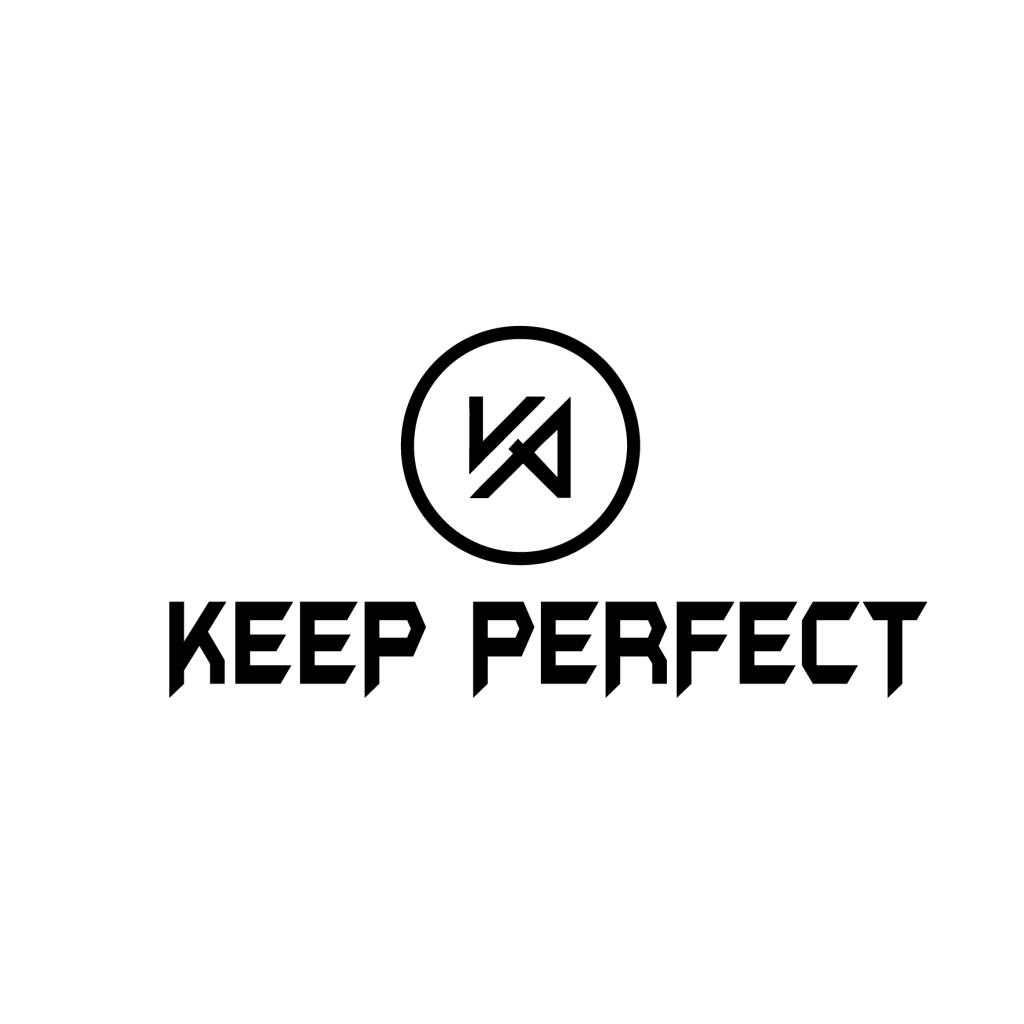

 Móvil/What's App/Wechat
Móvil/What's App/Wechat Correo electrónico
Correo electrónico AÑADE
AÑADE




